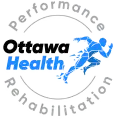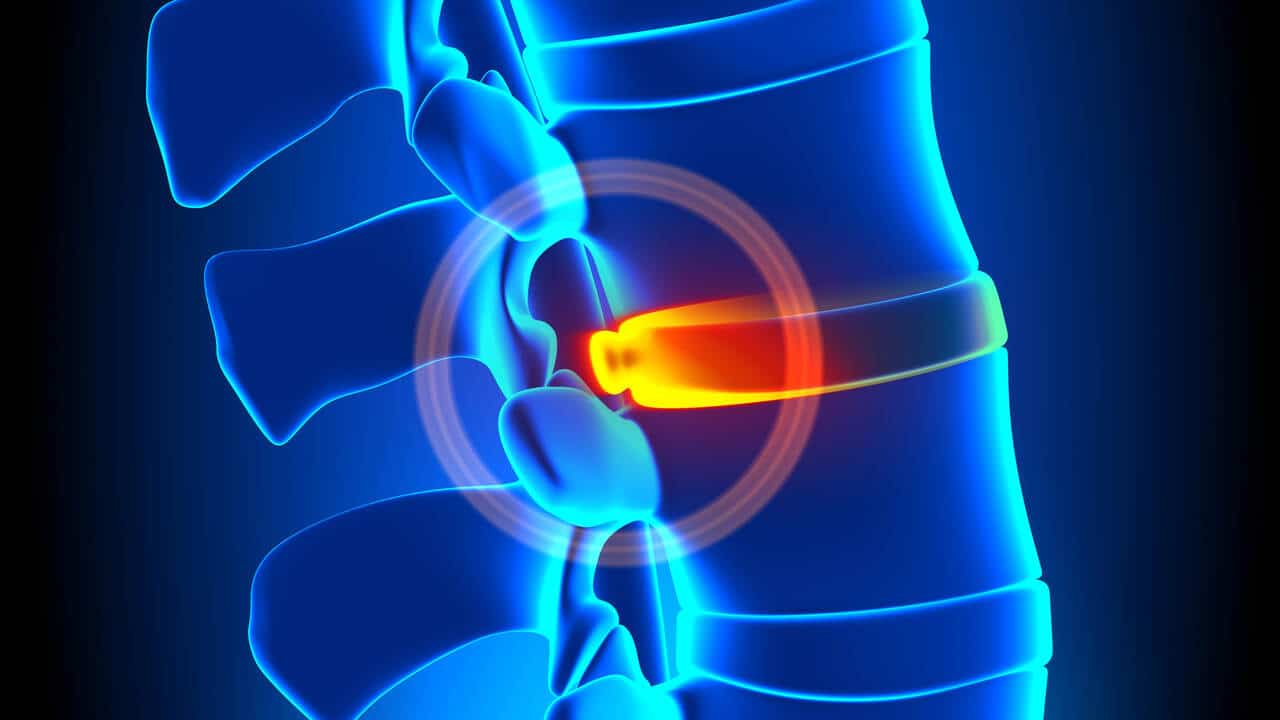A bulging disc can disrupt your daily life with persistent back pain, limited mobility, and even radiating leg discomfort. If you’re navigating these symptoms, understanding your treatment options is crucial for effective, lasting relief. Chiropractic care offers a non-surgical approach to managing bulging discs, with techniques focused on reducing nerve pressure and restoring function. In this blog, we’ll break down what a bulging disc is, how chiropractic care can help, and what to expect from treatments tailored to your unique needs.
What is a Bulging Disc?
The bony components that make up our spinal column are called vertebrae. Spinal discs sit between each vertebra in the spine, acting as cushions that absorb shock and allow for flexibility.
A bulging disc can occur anywhere along the spine. When the soft substance within the discs begins to push against the harder outside rim of the disc, over time and through thousands of repetitions, this inner material could begin to bulge outwards. If the injury is severe enough, this bulge could eventually turn into what we call a disc herniation.
A bulging disc can put pressure on nearby nerves, leading to pain, numbness, or tingling sensations, often radiating through the back, legs, or arms depending on the disc’s location.
The Role of Chiropractors Address Bulging Discs
The chiropractors at Ottawa Health are well-trained in lumbar disc herniations. Some of our staff have studied with Dr. Stuart McGill, one of the world’s leading experts in lumbar disc herniations.
One of the priorities for managing lumbar disc herniations is to centralize the pain. If the bulge is severe enough, the individual may begin to experience pain that travels down the leg similar to what sciatica would be described as. During the initial stages of our therapy, our goal is to identify which directions of movement your spine can tolerate and which ones it can’t.
Our therapy will revolve around the movements and functions that you can tolerate, in order to minimize pain. We have achieved great results through exercise therapy that focuses on relieving pressure on the nerves. For example, during the initial stages of our therapy, we often use a protocol that is called the McKenzie Protocol, in addition to Dr. Stuart McGill‘s ‘Big Three’ exercises.
Treating Bulging Discs: Chiropractic Care vs. Physiotherapy
Chiropractic care and physiotherapy both offer effective approaches for treating bulging discs, but they differ in focus. Chiropractic care emphasizes spinal mobilization to realign the vertebrae, relieving pressure on the bulging disc and reducing nerve irritation. Chiropractors may also incorporate soft tissue techniques and exercises to support spinal health.
Physiotherapy, on the other hand, focuses more on strengthening the surrounding muscles, improving flexibility, and restoring functional movement through targeted exercises and stretches. Both approaches are complementary and, when combined, can provide a well-rounded treatment plan that addresses both pain relief and long-term spinal stability.
At our clinic, we assign clients based on the expertise of our therapists. All of our therapists, both chiropractors and physiotherapists are well-equipped to manage both lumbar and cervical bulging discs. As such, you can rest assured that they can treat your condition in an efficient manner.
Chiropractic Sessions for a Bulging Disc: What to Expect
During a chiropractic session for a bulging disc, you can expect a focused, multi-step approach to relieve pain and improve spine health:
- Initial Assessment: The session begins with a thorough review of your symptoms and medical history to create a personalized treatment plan.
- Gentle Care: Targeted spinal mobilization helps realign the spine, reducing pressure on the bulging disc and relieving nerve irritation.
- Soft Tissue Therapy: Techniques like massage may be used to reduce muscle tension around the affected area, supporting the spine and promoting healing.
- Exercise Guidance: Your chiropractor may suggest exercises, such as the McKenzie Protocol, to strengthen core muscles and support your spine between sessions.
- Postural Advice: Tips on posture and safe movement help prevent future strain on the spine, supporting long-term recovery.
Each session aims to relieve pain while promoting spinal stability and preventing further issues.
Are Chiropractic Treatments Safe for a Bulging Disc?
Chiropractic treatments are absolutely safe for bulging discs, provided that the chiropractor offering the treatment is experienced and understands the mechanisms of injury well enough to know what should and should not be done. Chiropractors also assess each individual’s specific condition to avoid movements that could aggravate the injury.
Some people may experience mild soreness or stiffness following a chiropractic session, which usually subsides within a day or two. To minimize any potential side effects, it’s essential to communicate any changes in symptoms and follow your chiropractor’s post-treatment recommendations, such as resting or performing gentle stretches. Those with severe or complex spine conditions should discuss their full medical history with their chiropractor, as certain techniques may need to be modified or avoided.
How Many Chiropractic Sessions Are Needed to Treat a Bulging Disc?
The number of sessions it takes to treat a bulging disc depends on the severity of the injury and the exact symptoms that are presented. We have had minor lumbar disc bulges respond incredibly well after just one session that involved some education on the mechanism of injury, in addition to some low-intensity exercise. On the other end of the spectrum, we’ve had clients who required multiple months of therapy in order to relieve symptoms.
Preventing Surgery for a Bulging Disc: The Role of Chiropractic Care
Chiropractic care lays a lot of emphasis on education to help clients understand the mechanisms of injury for a disc bulge. Once clients fully understand how disc bulges are managed, how to relieve symptoms, and the types of activities that aggravate their condition, they are better equipped to handle the day-to-day activities.
Chiropractic care can not only help minimize further aggravation of a bulging disc but also potentially prevent the need for surgery. Additionally, when it comes to lumbar disc herniations, the treatment outcomes after both surgery and chiropractic care often have very similar results. That is why we advocate for physical rehabilitation and chiropractic care before even considering surgical interventions. While surgery may not be avoidable in all cases of bulging discs, it is important to start with non-invasive methods of treatment before moving on to options like surgical interventions.
Lifestyle Changes to Help Manage a Bulging Disc
In addition to chiropractic care, making small lifestyle adjustments can significantly ease the symptoms of a bulging disc and support long-term spinal health. Here are some effective changes you can make:
- Prioritize Good Posture: Sitting and standing with proper alignment can reduce strain on your spine. Consider using ergonomic chairs and standing desks to help support a neutral posture throughout the day.
- Use Safe Lifting Techniques: Avoid twisting or bending from your waist when lifting objects. Instead, bend your knees, keep the item close to your body, and engage your core to protect your spine.
- Engage in Low-Impact Activities: Low-impact exercises like walking, swimming, and cycling can keep your spine flexible and reduce pain without putting extra pressure on your discs.
- Take Regular Movement Breaks: Prolonged sitting can worsen symptoms. Stand, stretch, and walk around every 30 to 60 minutes to keep your spine from becoming stiff.
- Strengthen Your Core Muscles: A strong core supports the spine and helps to ease disc-related discomfort. Gentle exercises like planks or yoga poses can strengthen these muscles safely.
- Manage Stress Levels: Stress can increase muscle tension, worsening back pain. Techniques like deep breathing, meditation, or stretching can help you relax and reduce strain on your spine.
These small adjustments can help you manage symptoms, reduce back pain, and improve your overall well-being.
Find the Relief You’ve Been Looking For
If you’re struggling with back pain or sciatic symptoms due to a bulging disc, seeking guidance from a chiropractor can make all the difference. At Ottawa Health: Performance and Rehabilitation, our team combines years of expertise and innovative techniques to address the root of your discomfort. We’re dedicated to helping you regain strength, mobility, and comfort, empowering you with the tools and knowledge to prevent future issues. Don’t let back pain limit your life—reach out to us today to schedule a visit and take the first step toward effective relief and a stronger, healthier spine.




